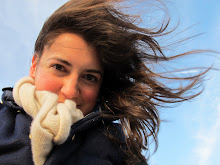A yoga teacher said this once in class. Before we lifted into our standing pose, she encouraged we align our legs and strengthen the grip of our feet. She said, "First structure, then freedom." This advice has had an everlasting effect on me, especially off the mat. As usual with yoga, the physical practice (the poses) are simply a metaphor for how we live our lives, how we handle difficult situations, how we handle change, how we handle disappointment, how we handle progress. First your pose, then yourself.
In terms of my poetry practice, I've taken this advice from the yoga studio and onto the page. Like any ol' soul in pursuit of their passion, I sometimes hit bumps in the road. I lose sight of inspiration, I succumb to distraction and I forget the joy, the utter pleasure, I get when producing a poem I am proud of. When I struggle with such ruts, I revisit the teachers I never met like Elizabeth Bishop, William Wordsworth, and Marianne Moore. I try to write a sonnet or a sestina or a villanelle. Within the restrictions of end-rhyme, line count or syllable concentration, I gain purpose and, without even knowing it, a wee bit of focus. And suddenly, I sense emotion push against the limits of the line. I feel tension. There is a poem! Maybe not my best. Maybe I don't even like it. But I did write.
Once I know the rules, it is only then, that I can break them. It's a cliche, I know. But when the blank page lacks the GPS system to take me on my wild ride, I rely on formal restraint as my guide. Warrior 2 or Shakespearean sonnet, take flight and be free!

First structure, then freedom.
Above is a photograph I took of "The Vanishing Ship," a sculpture by John Roloff (1989). It is one of the many pieces of art belonging to the Djerassi Resident Artists Program in Woodside, Ca. Last summer, my lovely teacher and friend, poet Denise Newman, invited me to explore the property and its magical treasures. She also introduced me to text/image based poetry. One of my favorites!


No comments:
Post a Comment